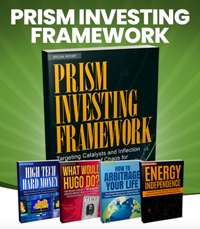 Prices rise and prices fall. So, too, they fall and rise. This is how the supply and demand sweet spot is continually discovered – and rediscovered.
Prices rise and prices fall. So, too, they fall and rise. This is how the supply and demand sweet spot is continually discovered – and rediscovered.
When supply exceeds demand for a good or service, prices fall. Conversely, when demand exceeds supply, prices rise. Producers use the information communicated by changing prices to make business decisions. High demand and rising prices inform them to increase output. Excess supply and falling prices inform them to taper back production.
This, in basic terms, is how markets work to efficiently bring products and services to market. Five year plans, command and control pricing systems, and government price edicts cannot hold a candle to open market pricing. But not all markets are created equal. The market for gumballs or garbage bags, for instance, is much simpler than the market for solar panels or jet engines.
What we mean is some markets are subject to more government intervention than others; especially, if there’s a large money stream that can be extracted by government coercion. Sometimes governments nationalize an entire market – for the good of the people, of course. Continue reading







